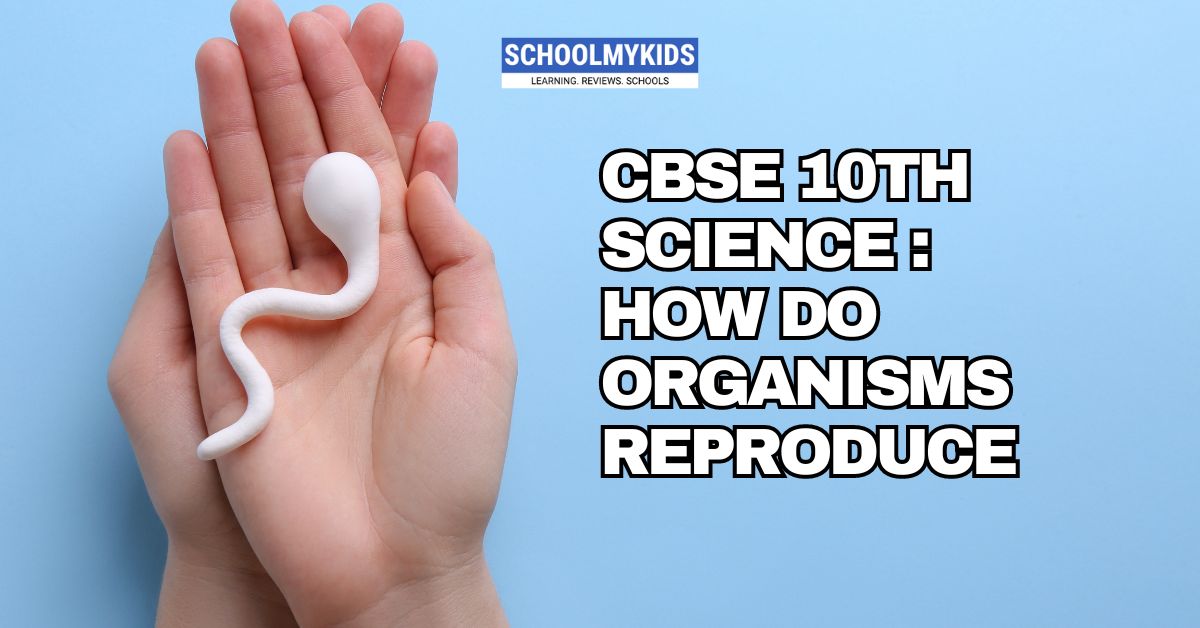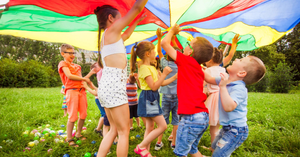Reproduction is a fundamental characteristic of living organisms, ensuring the continuation of species. The chapter “How Do Organisms Reproduce?” in the CBSE Class 10 Science curriculum explores various methods of reproduction in plants and animals. This article provides a comprehensive overview of the key concepts, mechanisms, and significance of reproduction.
Introduction to Reproduction
Reproduction is the biological process through which new individuals are produced from their parents. It ensures the survival of species, genetic diversity, and adaptation to changing environments. Reproduction can occur through two main mechanisms: asexual and sexual.
Asexual Reproduction
Asexual reproduction involves a single parent and produces offspring genetically identical to the parent. This method is efficient and allows rapid population growth, especially in favorable conditions.
Types of Asexual Reproduction
Binary Fission
Binary fission is a common method of asexual reproduction in unicellular organisms like bacteria and protozoa. The parent cell divides into two equal and identical daughter cells. For example, in Amoeba, the cell splits into two after duplicating its nucleus.
Budding
Budding occurs when a new organism develops from an outgrowth or bud on the parent. This bud detaches to form a new individual. This method is observed in organisms like Hydra and yeast.
Fragmentation
Fragmentation involves the breaking of the parent organism into several pieces, each of which develops into a new individual. This is common in organisms like sponges, sea stars, and certain types of algae.
Regeneration
Regeneration is the ability of an organism to regrow lost or damaged parts. Some organisms can regenerate entire new individuals from fragments of their bodies. For example, planarians can regenerate their entire body from a small piece.
Vegetative Propagation
Vegetative propagation is a form of asexual reproduction in plants. New plants grow from parts of the parent plant, such as stems, roots, or leaves. Methods of vegetative propagation include cuttings, runners, tubers, and rhizomes. For instance, potatoes reproduce through tubers, and strawberries through runners.
Spore Formation
Spore formation involves the production of spores that can develop into new individuals. Spores are typically single-celled, resistant to harsh conditions, and can be dispersed widely. This method is seen in fungi, algae, and some plants like ferns.
Sexual Reproduction
Sexual reproduction involves the fusion of male and female gametes, resulting in offspring that are genetically diverse. This diversity enhances adaptability and survival in changing environments.
Sexual Reproduction in Plants
Structure of Flower
The flower is the reproductive organ in angiosperms (flowering plants). Key parts include:
- Sepals: Protect the flower bud before it opens.
- Petals: Attract pollinators with their color and scent.
- Stamens: Male reproductive parts, consisting of anthers (produce pollen) and filaments.
- Carpels: Female reproductive parts, including the ovary (contains ovules), style, and stigma (receives pollen).
Pollination
Pollination is the transfer of pollen from an anther to a stigma. It can occur through:
- Self-Pollination: Pollen from the same flower or plant fertilizes the ovules.
- Cross-Pollination: Pollen from a different flower or plant fertilizes the ovules. Pollinators like bees, wind, and water can aid in this process.
Fertilization
After pollination, the pollen tube grows from the stigma to the ovary, allowing the male gamete to fuse with the female gamete in the ovule. This fusion forms a zygote, which develops into a seed. The ovary then develops into a fruit, protecting the seeds.
Sexual Reproduction in Animals
Human Reproductive System
The human reproductive system is specialized for producing, storing, and delivering gametes.
- Male Reproductive System: Includes the testes (produce sperm), vas deferens, seminal vesicles, prostate gland, and penis.
- Female Reproductive System: Includes the ovaries (produce eggs), fallopian tubes, uterus, and vagina.
Fertilization and Development
Fertilization in humans occurs when a sperm cell from the male fuses with an egg cell from the female, typically in the fallopian tube. This forms a zygote, which undergoes multiple cell divisions to form a blastocyst. The blastocyst implants in the uterine wall, developing into an embryo and eventually a fetus.
Key stages of development include:
- Embryo: The developing organism during the first eight weeks after fertilization.
- Fetus: The developing organism from the ninth week until birth.
Reproductive Health
Reproductive health is essential for overall well-being. It involves maintaining a healthy reproductive system, understanding contraception, preventing sexually transmitted diseases (STDs), and managing reproductive rights and family planning.
- Contraception: Methods to prevent unwanted pregnancies include barrier methods (condoms), hormonal methods (birth control pills), and intrauterine devices (IUDs).
- STDs Prevention: Safe sexual practices and regular medical check-ups are crucial to prevent and treat STDs.
- Family Planning: Involves planning the number and timing of children, ensuring that families have the resources and capacity to care for them.
Conclusion
Reproduction is a vital biological process that ensures the survival and continuity of species. Understanding the mechanisms of asexual and sexual reproduction in plants and animals provides insight into the diversity and adaptability of life on Earth. The CBSE Class 10 Science curriculum emphasizes these concepts, helping students appreciate the complexity and importance of reproduction in the natural world. This knowledge not only forms a foundation for advanced biological studies but also promotes awareness of reproductive health and its significance in human life
Questions and Answers
- What is the main purpose of reproduction?
- The main purpose of reproduction is to ensure the continuation of a species by producing new individuals.
- Define asexual reproduction.
- Asexual reproduction is a mode of reproduction involving a single parent, resulting in offspring that are genetically identical to the parent.
- What is binary fission? Give an example.
- Binary fission is a type of asexual reproduction where a unicellular organism divides into two equal halves. Example: Amoeba.
- Describe budding with an example.
- Budding is a form of asexual reproduction where a new organism develops from an outgrowth or bud on the parent. Example: Hydra.
- What is fragmentation? Give an example.
- Fragmentation is a type of asexual reproduction where the parent organism breaks into fragments, each capable of growing into a new organism. Example: Sponges.
- Explain regeneration with an example.
- Regeneration is the process where certain organisms can regrow lost body parts. Example: Planarians can regenerate a complete individual from a small body fragment.
- What is vegetative propagation?
- Vegetative propagation is a type of asexual reproduction in plants where new plants grow from parts of the parent plant such as stems, roots, or leaves.
- Name two methods of vegetative propagation.
- Two methods of vegetative propagation are cuttings and runners. Example: Potatoes reproduce through tubers, and strawberries through runners.
- What are spores?
- Spores are single-celled reproductive units capable of developing into a new organism without fusion with another cell. They are resistant to adverse conditions and can be dispersed widely.
- Define sexual reproduction.
- Sexual reproduction is a mode of reproduction involving the fusion of male and female gametes, resulting in genetically diverse offspring.
- What are the main parts of a flower involved in reproduction?
- The main parts of a flower involved in reproduction are stamens (male reproductive part) and carpels (female reproductive part).
- What is pollination?
- Pollination is the transfer of pollen from the anther (male part) to the stigma (female part) of a flower.
- Differentiate between self-pollination and cross-pollination.
- Self-pollination occurs when pollen from the same flower or plant fertilizes the ovules, while cross-pollination occurs when pollen from a different flower or plant fertilizes the ovules.
- What is fertilization in plants?
- Fertilization in plants is the fusion of male and female gametes (pollen and ovule) to form a zygote, which develops into a seed.
- Name the male and female reproductive parts in humans.
- The male reproductive parts include the testes, vas deferens, seminal vesicles, prostate gland, and penis. The female reproductive parts include the ovaries, fallopian tubes, uterus, and vagina.
- What is the function of the testes in the male reproductive system?
- The testes produce sperm and the hormone testosterone.
- Where does fertilization occur in humans?
- Fertilization occurs in the fallopian tubes.
- What is the role of the placenta during pregnancy?
- The placenta facilitates the exchange of nutrients, oxygen, and waste products between the mother and the developing fetus.
- Name two methods of contraception.
- Two methods of contraception are barrier methods (e.g., condoms) and hormonal methods (e.g., birth control pills).
- Why is reproductive health important?
- Reproductive health is important for ensuring overall well-being, preventing sexually transmitted diseases, managing family planning, and maintaining healthy reproductive systems.
These questions and answers cover key concepts from the chapter on “How Do Organisms Reproduce?” and should help reinforce understanding of the topic









Be the first one to comment on this story.